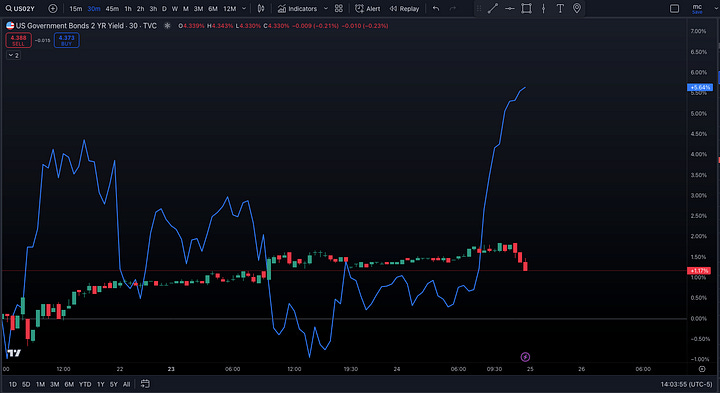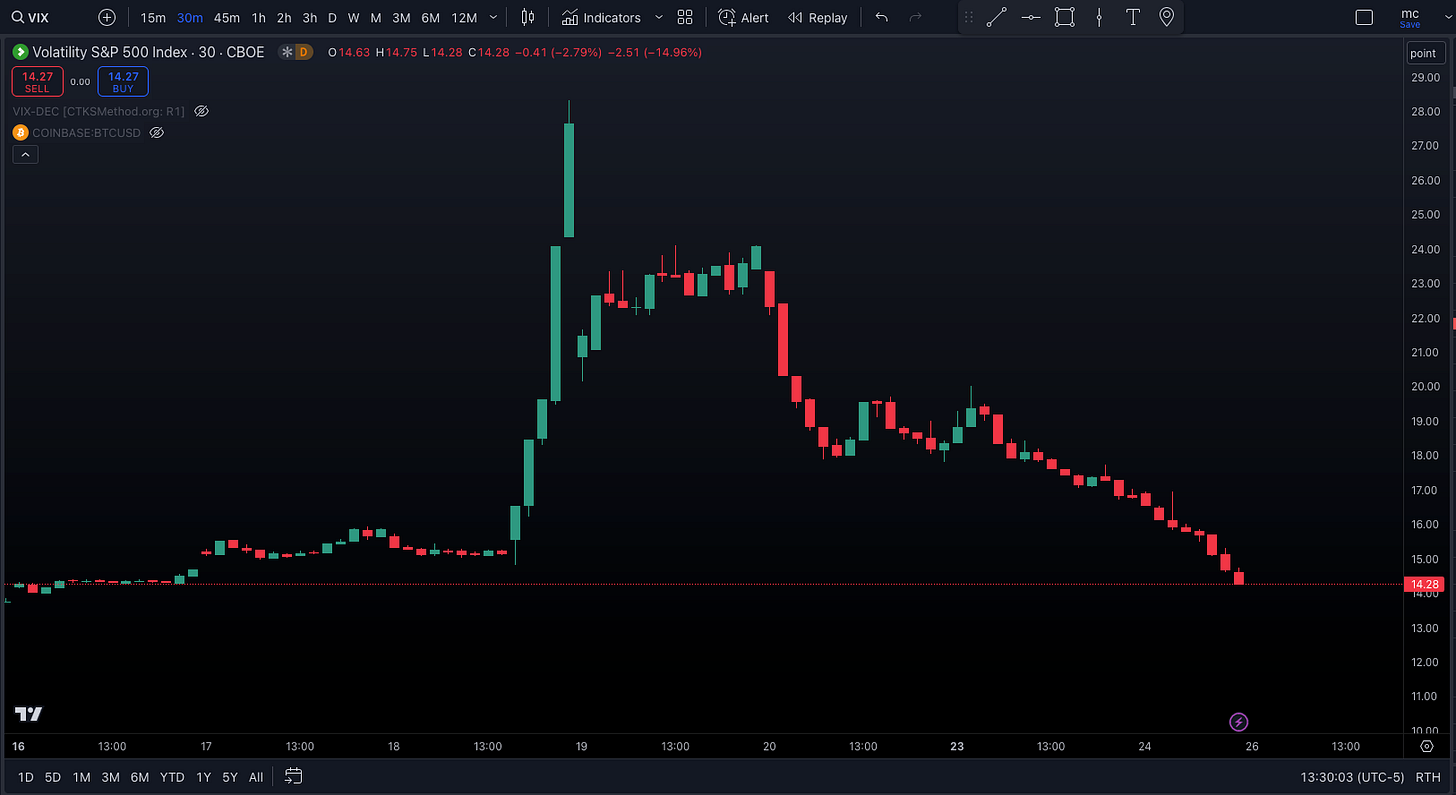Save Room for Risk at the Macro Buffet
The VIX Has Dropped - Is Fear on Holiday Break?
On its way down since mid-last week, the VIX has cut through a significant support level between 18.20 and 18.36 (not shown below):
Precarious in its current space where support is thin, the VIX it can easily drop down to a support level at 12.64, given a favorable environment. But what kind of environment are we in—risk-on or risk-off?
“Risk-on” vs. “Risk-off”
Looking at the chart setup below, we can observe key macro indicators compared to BTC (blue line) in the 2-hour timeframe since the start of Friday the 13th of December, 2024.
In the top row, we’re analyzing the US 10-Year Treasury Yield, the US 2-Year Treasury Yield, the DXY (US Dollar Index), and the Euro. In the bottom row, we see junk bonds, the VIX, the dollar-yen, and the Aussie dollar, all paired against BTC.
Yields, the Dollar, and Junk
BTC also demonstrates an inverse relationship with the DXY. A strong dollar often weakens BTC by making it more expensive for international investors. On global markets, the USD's strength often drives broader risk-off behavior, indirectly impacting demand for BTC. Even without directly using USD, foreign investors may feel the pinch of currency exchange rates.


Weakness in junk bonds has persisted since last week’s drama with the VIX, aligning with the narrative of a risk-off environment as investors pull back from high-yield, high-risk instruments. Junk bonds are likely to continue weakening if yields keep rising, as the cost of borrowing increases and appetite for risk declines.
Commodities and Retail Sentiment
Other key indicators of risk sentiment are gold, silver, US Oil and copper. Similar to junk bonds, copper is also displaying consolidation-like behavior, bouncing between 4.1250 and 4.0830 (not shown below):
We see minimal divergence between gold and silver, reflecting their historical correlation:
When yields rise, both gold and silver tend to drop, as their appeal as non-yielding assets diminishes. US Oil, an inflationary asset intrinsically tied to prices, directly impacts the cost of living. As oil prices rise, so do broader inflationary pressures, which can weigh on both consumers spending as well as risk sentiment.
The latest Redbook Index shows sales growth of 5.9%, up from the prior 4.8%. This sharp increase suggests robust consumer spending during the holiday shopping season. While this could be interpreted as a risk-on signal, it’s important to weigh it against the backdrop of rising yields, a stronger dollar, and subdued commodity markets like copper.
It’s worth noting that this spending is likely driven by necessity rather than discretionary behavior. Consumers are spending to meet basic needs in the face of rising costs—not exactly a sign of a healthy risk appetite.








It might be red and green but I’m not feeling festive
Am I understanding this one part correctly that silver and gold prices are down at the moment.